Back in May, I bit the bullet and bought myself the Canon 100-400 f4.5-5.6 L IS II. The lens had brilliant reviews, particularly amongst wildlife enthusiasts, so it was on my wish list for quite some time. I’m a macro specialist and was a little dubious concerning the usefulness of a long focal range lens when used to capture small wildlife, such as beetles, butterflies and dragonflies.
Four months later, it’s now September and I’ve had numerous great opportunities to test the lens out. The subjects in this post will consist of Stone Chats in Kit Hill, Cornwall; butterflies and dragonflies in Kenfig Nature Reserve, South Wales; and Iberian Wall Lizards in Andulucia, Spain. All varied wildlife and great locations from which to put the lens through its paces.
I was particularly curious to see how the lens would compare to my standard 100mm macro lens. When we talk about long zoom lenses, we tend to fixate on the longer end of the focal reach, and particularly with this model, the wildlife we can shoot with it. An often-overlooked specification is the MFD, or Minimum Focus Distance. This is the closest distance that an object can be from the sensor for it to be able to focus. Note here that I say “from the sensor”. MFD is NOT distance from the front of the lens, as a lot of people mistakenly think it is!
The Canon lens is astonishing in that at 400mm it can focus as close as 36 inches! Imagine being able to shoot something that is 3 feet away, at 400mm! In fact, if you put this on a 1.6x APS-C camera like my 7D,you are shooting at over 600mm! That’s very impressive, and my main reason for buying the lens.
With this amazingly short MFD, it means the 100-400 mk2 can produce “macro-like” images just as it can excel in shooting larger wildlife. Notice how I use the term “macro-like” and not “macro” and that’s because it’s not capable of providing 1:1 magnification (nor does Canon claim it to be able to do this). Nevertheless, for certain species of beetles, butterflies, dragonflies and reptiles – it does provide some advantages over a macro lens. I will look at these advantages while also pointing out its limitations when used for “macro-like” images.
My first reaction when unboxing the lens was its substantial weight – much heavier than the macro lenses I’m using. However, I suspect that for somebody using larger focal length lenses this will come as no surprise. One could say that it’s reassuringly heavy and that this is indicative of its robust build quality. It certainly feels beautifully engineered and has so far performed faultlessly. At 100 mm the lens fits perfectly into my rucksack (with lens hood reversed).
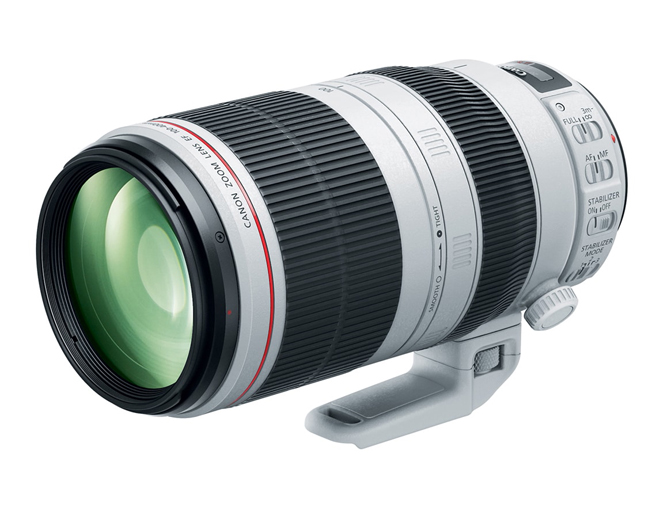
Without hood and zoomed in at 100mm the lens is compact and will fit comfortably in my camera ruck-sack. The foot at the base can easily be removed or left for tripod use. I like to have mine rotated at the top position, facing up. I can then use it as a handle to lift the lens up.
The lens hood is attached to the lens with only a quarter of a turn. There is a useful slot on the hood that allows a polarising filter to be easily turned. Another practical and well thought out addition is the use of a tensioning ring that allows one to change the stiffness of the focusing ring – from loose to tight, in gradual increments.
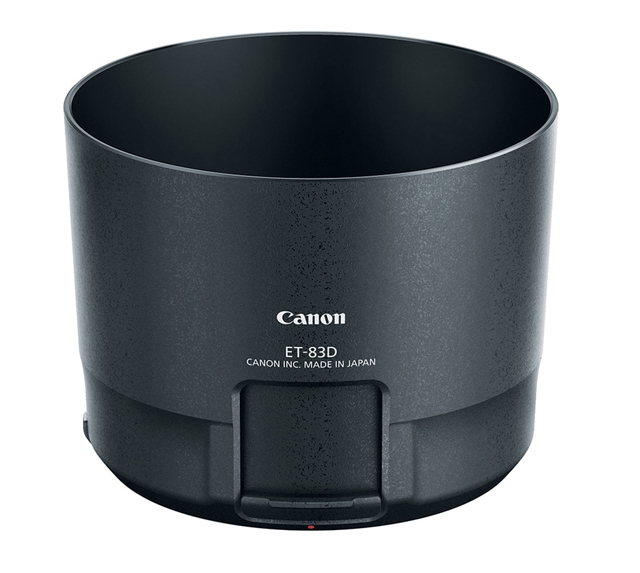
The Lens hood is made of plastic which is not a bad thing as it helps to keep the overall weight of the lens down. It is lined on the inside with a black velvet/fleece like material, ideal for absorbing light and reducing flare. A very useful feature is a slide window at the base of the hood that when opened makes it possible to turn a polarising filter (assuming that one is used).
The actual focusing ring is very smooth but a little short for my taste. Macro lenses tend to have large focusing rings, which is particularly important for the more demanding focusing needs of macro. As this is not a macro lens it’s not a significant issue and I tend to rely more on it’s excellent automatic focusing – which is almost silent and very quick.
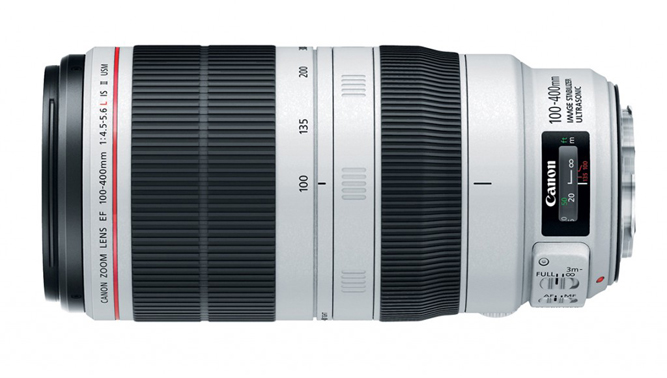
The focusing ring (on the right-side) has rubberised textured ridges, giving a pleasantly tactile feel. It is very smooth but a little too narrow for my liking. Ideally, it should be the same size as the zoom control. The zoom ring (on the left side) is larger making it an ideal size for rotation. It is also very smooth and has a very handy tensioning ring that can increase the stiffness of the barrel – in increments from loose to stiff . On the side and near the base of the lens are three Image Stabilization mode/switches.
The zoom is also very smooth but the best feature is the amazing IS (image stabilization). Canon claims that the IS can reduce camera shake by up to 4 stops. So at 400mm one should be able to shoot as low as 1/50. I can vouch for this but with the proviso that at MFD (approx. 3 ft) camera shake becomes more pronounceable. A minimum shutter speed of 1/100 becomes a more sensible figure. It’s great to have IS and once it kicks in (which only takes a second or two after slightly depressing the shutter) the image becomes stable making composing and focusing so much easier.
Lets now turn to the crux of the matter, which is how well the lens performs in terms of image quality. Before I turn to the MFD range more suitable for the capturing of insects I’ll briefly show some pictures of Stone Chats and Mallard Ducks taken on the heathland of Cornwall.
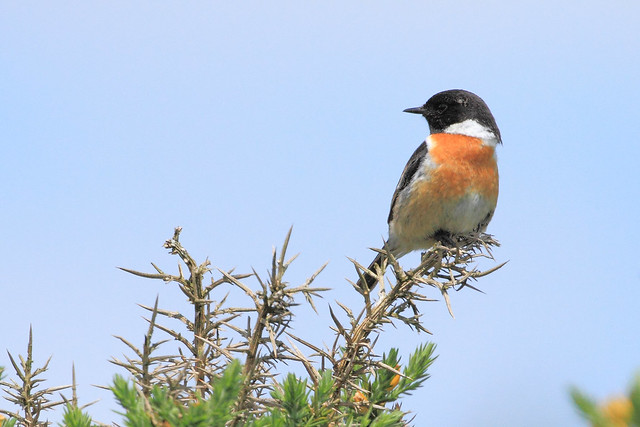
Stone Chat (male) – Saxicola rubicola
Canon EOS 7D – EF100-400mm IS II USM – 400mm / 5.6 / 1/6400 / ISO 400
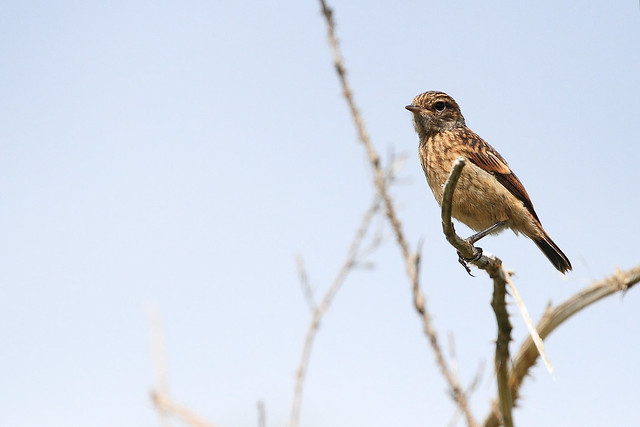
Stone Chat (female) – Saxicola rubicola
Canon EOS 7D – EF100-400mm IS II USM – 400mm / 5.6 / 1/2500 / ISO 400
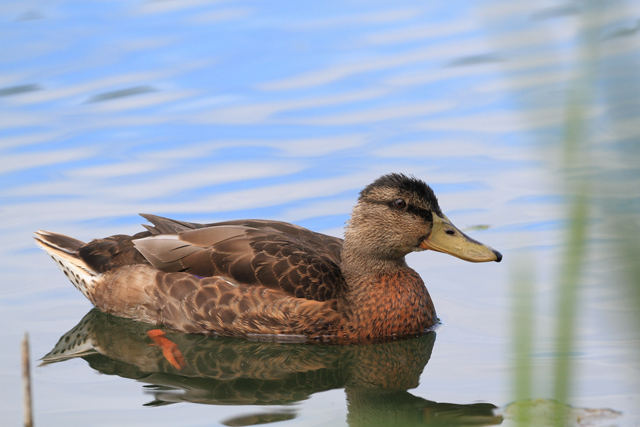
Mallard Duck (female) – Anas platyrhynchos
Canon EOS 7D – EF100-400mm IS II USM – 263mm / 5.6 / 1/1000 / ISO 400
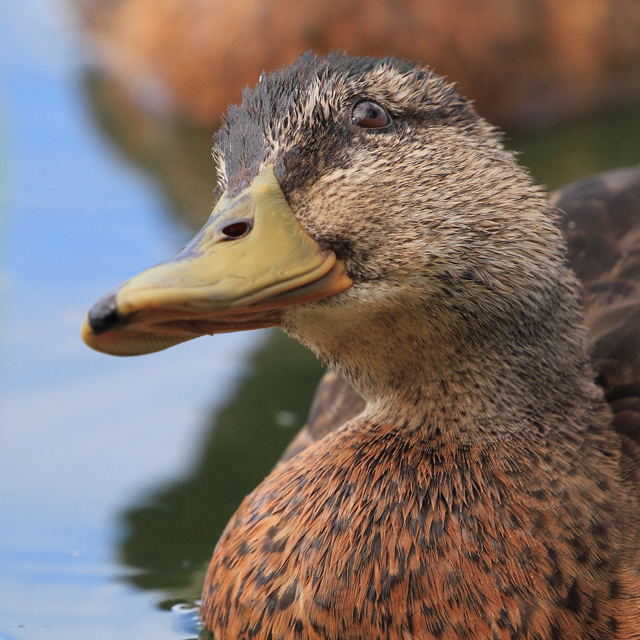
Mallard Duck (female) – Anas platyrhynchos
Canon EOS 7D – EF100-400mm IS II USM – 400mm / 5.6 / 1/800 / ISO 400
The image quality at beyond a couple of yards is outstanding making this a great lens for bird photography. The Mallard shots are testaments to this with details of the feathers beautifully defined in the portrait shot. Turning to the Stone Chats the definition is OK although the birds were too far away for the image to render as much detail as I would have liked. The images of the Stone Chats have also been cropped and one should recognise that at this distance a 600mm lens would have been a better choice. However, its heavy-weight would make it less practical and would almost certainly have needed the stability of a tripod. The beauty of the 100-400mm is that while it may seem heavy compared to macro lenses it’s a gazelle when compared to the elephantine 600mm lenses!
What about its performance at the MFD range? As this is the main reason for buying this lens I’ll analyse this in considerable detail. Images are better testaments to this than words, so lets now have a look at some. I’ll start off by comparing un-cropped and cropped images:

Small Heath – Coenonympha pamphilus
Canon EOS 7D – EF100-400mm IS II USM – 400mm / f5.6 / 1/2000 / ISO 400

Small Copper – Lycaena phlaeas
Canon EOS 7D – EF100-400mm IS II USM – 400mm / f8.0 / 1/640 / ISO 400

Small Skipper – Thymelicus sylvestris
Canon EOS 7D – EF100-400mm IS II USM – 300mm / 5.6 / 1/320 / ISO 400
These insects represent the smaller species of butterflies and would just about fit onto a 35mm sensor and so ideal subjects for a macro lens. At the 300/400mm MFD range the uncropped specimens are at a reasonable size and with a little cropping can be scaled to macro comparable size. That’s impressive bearing in mind these easily spooked butterflies, moths and dragonflies were approximately 3 feet away! A comparable shot with a 150mm macro lens would need to be about 1 foot away and a 100mm macro around 9 inches. So obviously at 3 feet one is less obtrusive with less chance of scaring away the subject.
Let’s now look at some larger specimens that didn’t require any cropping:
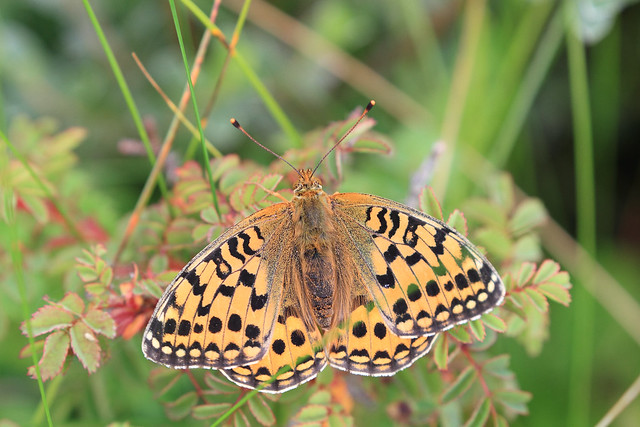
Dark Green Fritillery – Argynnis aglaja
Canon EOS 7D – EF100-400mm IS II USM – 300mm / f8.6 / 1/160 / ISO 400
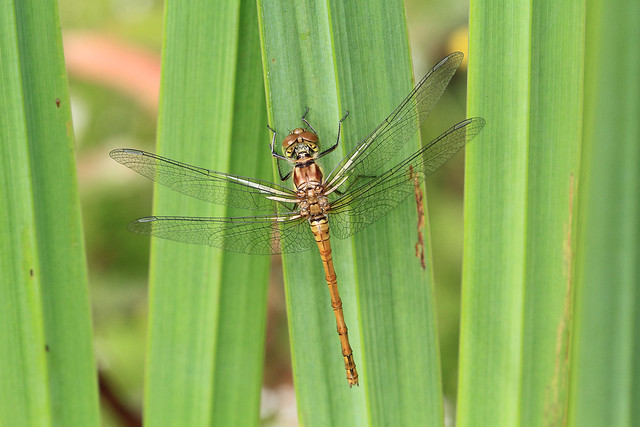
Common Darter – Sympetrum striolatum
Canon EOS 7D – EF100-400mm IS II USM – 300mm / f11.0 / 1/100 / ISO 400
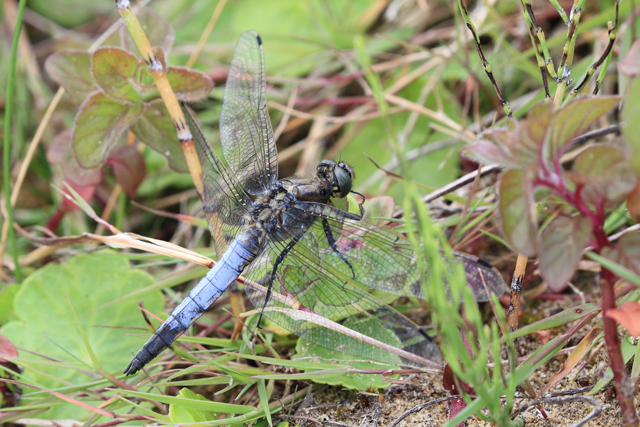
Black-tailed Skimmer – Orthetrum cancellatum
Canon EOS 7D – EF100-400mm IS II USM – 300mm / f11.0 / 1/100 / ISO 400
The Dark Green Fritillary is a very challenging butterfly to photograph. It is easily spooked and is a very strong flyer, so almost impossible to follow. To get a comparable shot with a macro lens would probably have resulted in scaring off this very timid butterfly. However, at 3 feet away there was less chance of this happening resulting in a very nice capture of this beautiful butterfly. The Black Skimmer and Common Darter are not so easily frightened and were easily approached at 3 feet.
In order to more accurately assess how well this lens compares to a dedicated macro lens I’ll compare images of the same specimen taken with the 100-400mm lens to shots captured with a standard 100mm macro:
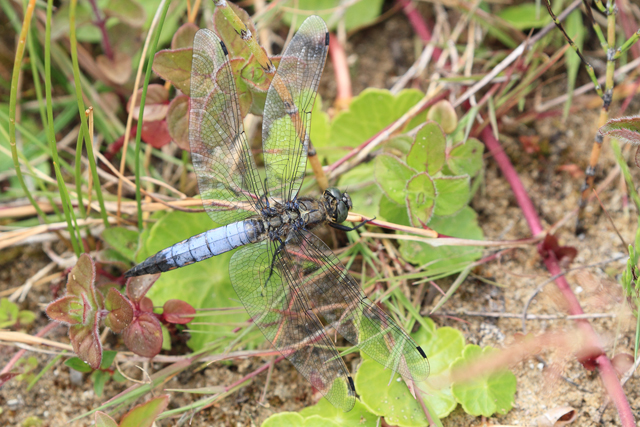
Black-tailed Skimmer – Orthetrum cancellatum – 400mm
Canon EOS 7D – EF100-400mm IS II USM – 300mm / f8.0 / 1/400 / ISO 400

Black-tailed Skimmer – Orthetrum cancellatum – 100mm
Canon EOS 5D – EF100mm USM – 100mm / f5.6 / 1/400 / ISO 400

Common Darter – Sympetrum striolatum – 400mm
Canon EOS 7D – EF100-400mm IS II USM – 300mm / f11.0 / 1/100 / ISO 400
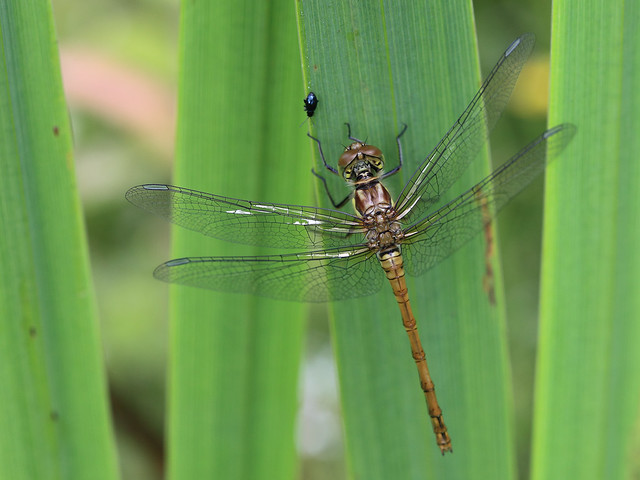
Common Darter – Sympetrum striolatum – 100mm
Canon EOS 5D – EF100 IS USM – 100mm / f11.0 / 1/100 / ISO 400

Common Blue Damselflies – Enallagma cyathigerum – 100-400mm
Canon EOS 7D – EF100-400mm IS II USM – 300mm / f8.0 / 1/125 / ISO 400
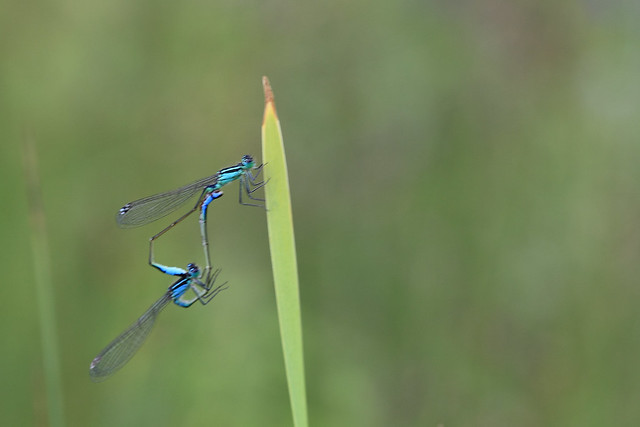
Common Blue Damselflies – Enallagma cyathigerum – 100mm
Canon EOS 5D – EF100mm USM – 100mm / f5.6 / 1/200 / ISO 400
You’ll be hard pushed to find a difference with the Black Tailed Skimmer images; Enlarging them, the 100mm macro just has the edge, but not by much. The sharpness of the Common Darter is pretty much on a par and one would have to scrutinize thoroughly to notice that the macro is slightly sharper. The mating Common Blue Damselflies are surprisingly sharper on the 100-400mm lens but that’s down to the incredible IS. There was a breeze and the 1/200 shutter speed on the macro was not fast enough to arrest the movement resulting in some image blur. However, at 300mm / f8 / 1/160 the image stabilisation appears to have made an enormous difference resulting in a much sharper image. It should be stressed that this shot does not represent a fair comparison, as the image blur on the macro is due to bad technique and has nothing to do with the focusing qualities of the lens. On the whole, I have found my macro lenses to be a little sharper but that’s to be expected and no great surprise. What does surprise me is the impressive sharpness of the 100-400mm lens and the effectiveness of the IS. It comes pretty darn close to giving the macro lens a good run for its money.
So far so good and I’ll now turn my attention to some images of Iberian Wall Lizards captured on a recent visit to Spain.

Iberian Wall Lizard – Podarcis hispanica – cropped
Canon EOS 7D – EF100-400mm IS II USM – 400mm / f8.0 / 1/1250 / ISO 400
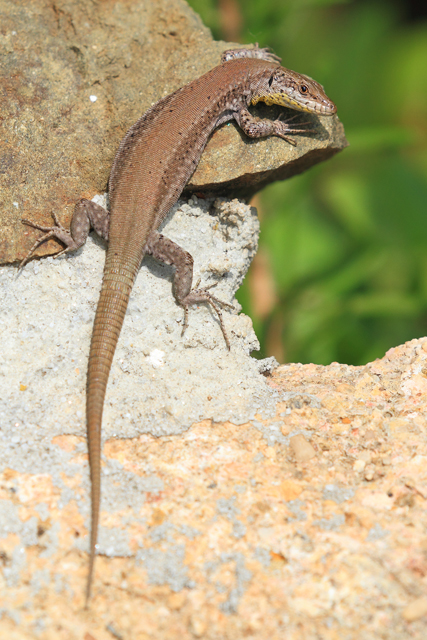
Iberian Wall Lizard – Podarcis hispanica – uncrossed
Canon EOS 7D – EF100-400mm IS II USM – 400mm / f8.0 / 1/1250 / ISO 400

Iberian Wall Lizard – Podarcis hispanica – the blue tale indicates a juvenile
Canon EOS 7D – EF100-400mm IS II USM – 400mm / f8.0 / 1/2000 / ISO 400
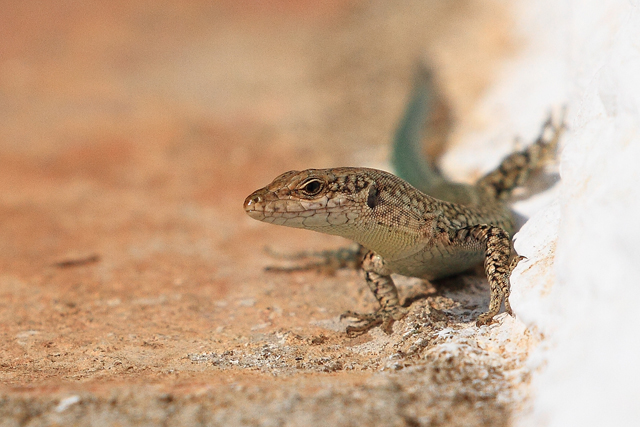
Iberian Wall Lizard – Podarcis hispanica
Canon EOS 7D – EF100-400mm IS II USM – 400mm / f8.0 / 1/2500 / ISO 400
The lizards are the perfect size at around the MFD range.
Conclusion: Would I put away the 100 and 150mm macro lenses and rely exclusively on this lens? Emphatically, no way, as my macro lenses provide true 1:1 magnification and are able to bring out subtle details, such as the ommatidia (facets in an insects eye) that the 100-400mm lens would struggle to render.
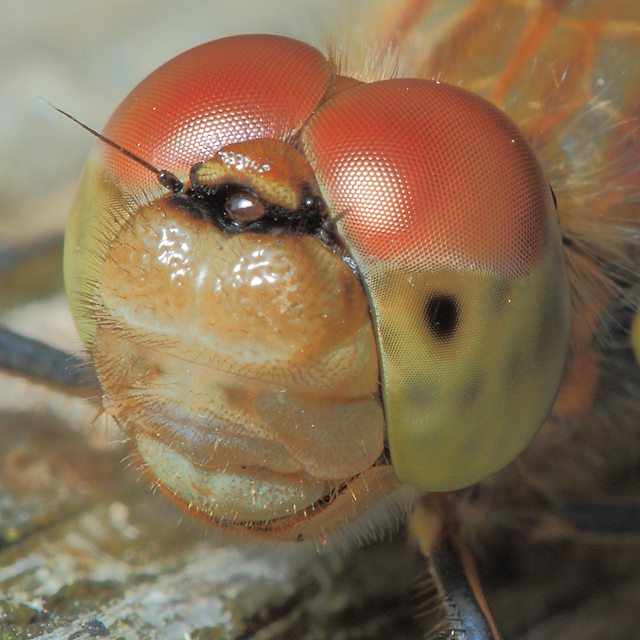
Common Darter – Sympetrum striolatum
Canon EOS 7D – EF100mm USM – f14.0 / 1/160 / ISO 100
The macro lenses will continue to stay in my bag and be the most appropriate choice for bringing out intricate details in an insect’s anatomy. Nevertheless, the 100-400mm has also earned its place in my bag. It’s an incredibly versatile lens that is capable of capturing ‘almost macro images’ while excelling in larger wildlife, such as birds and reptiles. Most of all it has impressed me with its MFD, at 3 feet there is less chance of scaring an insect making it an excellent choice for capturing the easily startled insects, such as my beloved butterflies and dragonflies.

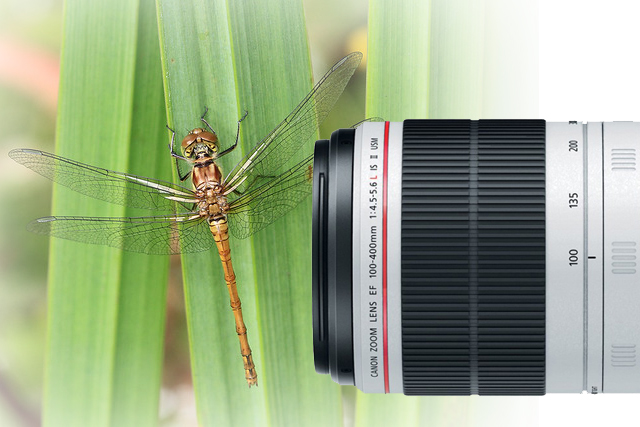
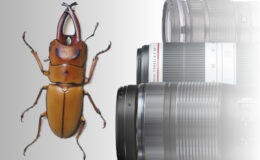
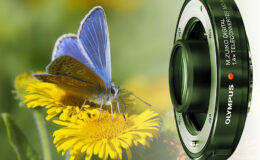
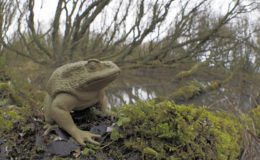
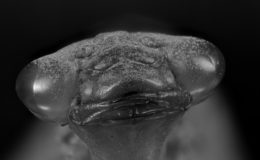
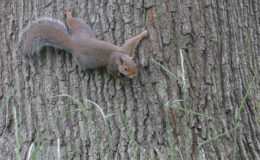
Leave a Comment